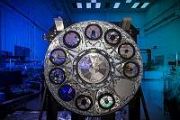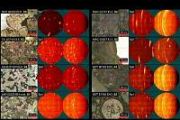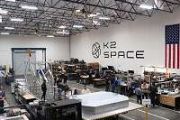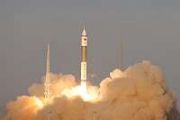
Copernical Team
NASA Invites Media to Psyche Launch, Mission will Study an Asteroid
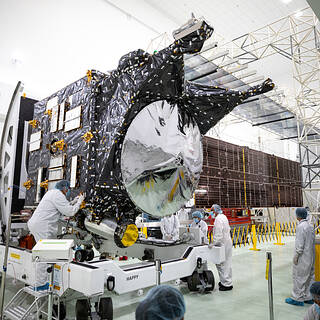 Media accreditation is now open for the upcoming launch of NASA’s Psyche spacecraft, for a mission to a unique metal-rich asteroid orbiting the Sun between Mars and Jupiter.
Media accreditation is now open for the upcoming launch of NASA’s Psyche spacecraft, for a mission to a unique metal-rich asteroid orbiting the Sun between Mars and Jupiter. La NASA invita a los medios al lanzamiento de Psyche
 Ya está abierto el proceso de acreditación de los medios de comunicación para el próximo lanzamiento de la nave espacial Psyche de la NASA en su misión a un asteroide único y rico en metales que orbita alrededor del Sol, entre Marte y Júpiter.
Ya está abierto el proceso de acreditación de los medios de comunicación para el próximo lanzamiento de la nave espacial Psyche de la NASA en su misión a un asteroide único y rico en metales que orbita alrededor del Sol, entre Marte y Júpiter. Could puncturing a satellite's battery help it deorbit faster?
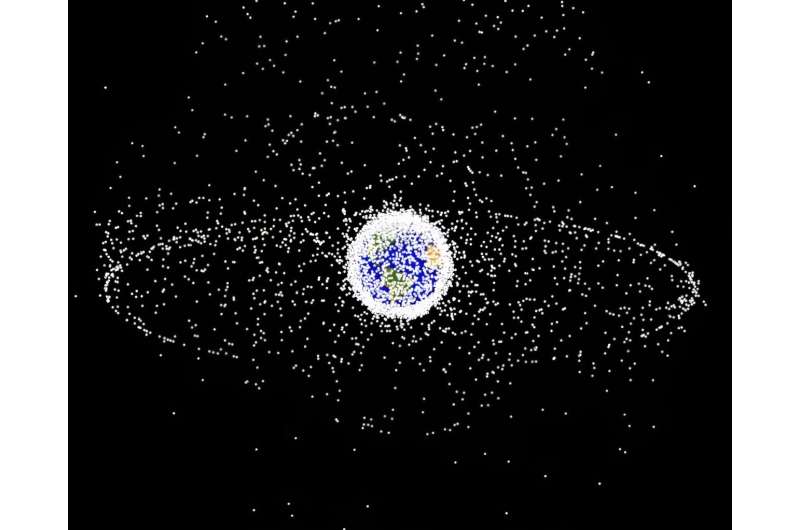
A few years ago, there was a panic about lithium-ion batteries that exploded and could do things like take down a jetliner. On a recent trip, an airline asked passengers to turn in any devices with batteries that had been banned because of safety concerns. These are indicators of a widely understood downside of lithium-ion batteries, ubiquitous in cell phones, laptops, and other electronic hardware—they can easily catch fire very spectacularly. However, a team at the Aerospace Company is working on an idea to turn this potentially catastrophic event into an asset—by using it to deorbit defunct satellites.
Almost all satellites have some form of battery backup in them. Many utilize it to keep the lights on, while its solar panels aren't catching enough rays to fully power the craft. And most of those batteries are some form of lithium-ion, so the industry already widely adopted the underlying technology.
Rùm on the rocks
 Image:
Rùm on the rocks
Image:
Rùm on the rocks Present and future of satellite navigation
 The 14th ESA/JRC International Summer School on GNSS, organized by the European Space Agency (ESA) and the Joint Research Centre (JRC), took place in July in Kiruna, Sweden. The Summer School, sponsored this year by GMV, trains the next generations of scientists and engineers to master space-related applications.
This year's program focused on giving students a comprehensive overview of sa
The 14th ESA/JRC International Summer School on GNSS, organized by the European Space Agency (ESA) and the Joint Research Centre (JRC), took place in July in Kiruna, Sweden. The Summer School, sponsored this year by GMV, trains the next generations of scientists and engineers to master space-related applications.
This year's program focused on giving students a comprehensive overview of sa Intelsat completes C-Band spectrum clearing for 5G Deployment
 Intelsat, operator of one of the world's largest integrated satellite and terrestrial networks and leading provider of inflight connectivity, will receive nearly $3.7 billion in the fourth quarter after completing C-band frequency clearing, providing future strategic opportunities for the company and its shareholders.
"Intelsat's C-band transition facilitates broader 5G services in the Uni
Intelsat, operator of one of the world's largest integrated satellite and terrestrial networks and leading provider of inflight connectivity, will receive nearly $3.7 billion in the fourth quarter after completing C-band frequency clearing, providing future strategic opportunities for the company and its shareholders.
"Intelsat's C-band transition facilitates broader 5G services in the Uni ESA's Space Environment Report 2023
 Our planet is surrounded by spacecraft carrying out important work to study our changing climate, deliver global communication and navigation services and help us answer important scientific questions.
But some of their orbits are getting crowded and increasingly churning with deadly, fast-moving pieces of defunct satellites and rockets that threaten our future in space.
In 2002, the
Our planet is surrounded by spacecraft carrying out important work to study our changing climate, deliver global communication and navigation services and help us answer important scientific questions.
But some of their orbits are getting crowded and increasingly churning with deadly, fast-moving pieces of defunct satellites and rockets that threaten our future in space.
In 2002, the Engineers put a Mars lander legs to the test
 Sturdy legs are needed to absorb the impact of the heaviest spacecraft to ever touch down on the Red Planet. NASA's Perseverance rover continues to rack up tubes filled with rock core samples for the planned Mars Sample Return campaign. The joint effort by NASA and ESA seeks to bring scientifically selected samples back from Mars to be studied on Earth with lab equipment far more complex than co
Sturdy legs are needed to absorb the impact of the heaviest spacecraft to ever touch down on the Red Planet. NASA's Perseverance rover continues to rack up tubes filled with rock core samples for the planned Mars Sample Return campaign. The joint effort by NASA and ESA seeks to bring scientifically selected samples back from Mars to be studied on Earth with lab equipment far more complex than co Cracks in ancient Martian mud surprise Curiosity team
 A new paper suggests the same conditions that created the cracks could have been favorable to the emergence of microscopic life. Scientists aren't entirely sure how life began on Earth, but one prevailing theory posits that persistent cycles of wet and dry conditions on land helped assemble the complex chemical building blocks necessary for microbial life. This is why a patchwork of well-preserv
A new paper suggests the same conditions that created the cracks could have been favorable to the emergence of microscopic life. Scientists aren't entirely sure how life began on Earth, but one prevailing theory posits that persistent cycles of wet and dry conditions on land helped assemble the complex chemical building blocks necessary for microbial life. This is why a patchwork of well-preserv Epson bolsters space robotics through GITAI investment
 In a move emblematic of the burgeoning space industry's trajectory, Epson has announced a fresh investment into GITAI, a startup focused on creating versatile robotic solutions for space-based applications. GITAI's mission centers around supplying safe and cost-effective labor for myriad tasks in space, ranging from operations within space stations orbiting Earth to more ambitious endeavors on t
In a move emblematic of the burgeoning space industry's trajectory, Epson has announced a fresh investment into GITAI, a startup focused on creating versatile robotic solutions for space-based applications. GITAI's mission centers around supplying safe and cost-effective labor for myriad tasks in space, ranging from operations within space stations orbiting Earth to more ambitious endeavors on t 
















